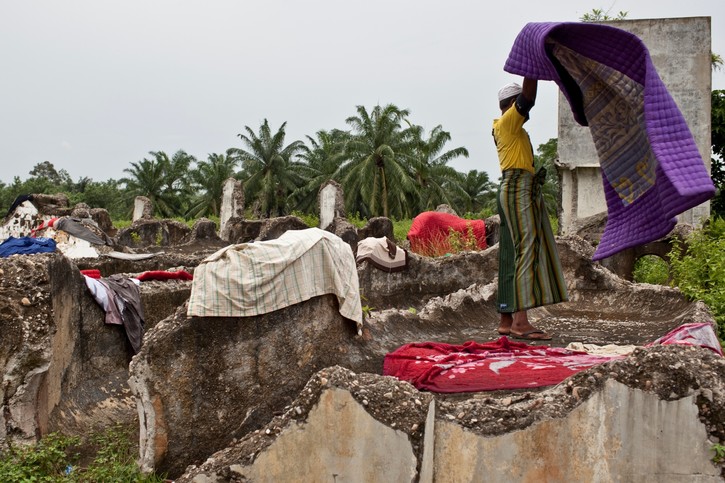by REALISA D. MASARDI
 Rohingya man in a camp in Bayeun, Aceh PHOTO/Henri Ismail
Rohingya man in a camp in Bayeun, Aceh PHOTO/Henri Ismail
During my visit to Church World Service shelters in Bogor in 2012, I met a 10-year-old boy from Afghanistan who travelled with his father, cousin, and uncle to Indonesia. All of them but him died when their boat sank. The boy was the youngest in the shelter, and the only unaccompanied minor. An older boy in the shelter told me that he did not talk much when he arrived, but now he is getting more cheerful.
In most settings, children receive priority, and standards and restrictions that apply to adults are waived. Children are the first to be saved in a dangerous situation, and they are the last to be blamed if rules are broken. Almost all UN member countries, including Indonesia, showed their commitment to protecting children by ratifying the 1989 Convention on the Rights of the Child (CRC). Given this fact, it can be expected that all minors in Indonesia enjoy preferential treatment. But in the context of minor refugees and asylum seekers, does the current treatment ensure the best interests of these children?
The most precarious group
By August 2015, UNHCR Indonesia registered 3672 minor refugees and asylum seekers, including 1133 unaccompanied and separated children. The UN considers unaccompanied minors the most vulnerable group among all children because they do not have a guardian to rely on. In most cases, unaccompanied minors in Indonesia are sent from their homeland by their parents, with the help of smugglers. Sometimes they are orphans, and relatives help them pay smugglers to take dangerous journeys in the hope of a better future in another country.
There are also a number of children who start their journey with parents or guardians but become separated along the way due to accidents or different smuggling routes. Separation and incidents on the journey often cause severe trauma. These children have to cope with the loss of loved ones, along with culture shock, complicated asylum procedures and precarious day-to-day conditions – on their own.
Unaccompanied minors face greater difficulty seeking asylum compared to those with guardians. They are often trapped between national immigration and child protection regimes. As minors, they can receive accelerated refugee status decisions, but they often have to wait a significant amount of time to be resettled because few countries accept children with no guardian. As a consequence, many unaccompanied minors have to wait until they are 18 years old to be resettled in a third country.
The majority of the unaccompanied minors in Indonesia are from the Hazara ethnic group of Afghanistan (59 per cent), followed by Rohingya from Myanmar (28 per cent) and children from Somalia (8 per cent). Of the 1133 unaccompanied minors, 976 are boys and 157 are girls. This gender skew illustrates a common feature of children’s migration: boys are encouraged to pursue opportunities independently, or are even sent out as ‘parachute’ or ‘anchor children’, while girls are forbidden to travel without a trusted adult.
However, in the Southeast Asia context, this figure has gradually changed as more underage girls are travelling without a guardian. UNHCR Indonesia records show that of 287 underage Rohingya children (12–17 year-olds) in Aceh and Medan, 105 are female. When I visited Rohingya refugee camps in Aceh in June 2015, I met numerous underage girls who had travelled with children of their own, hoping to reunite with husbands or relatives in Malaysia. Despite UNHCR registering them as separated children with multiple vulnerabilities, the local government classified them as adults. The number of Rohingya girls being smuggled and sold as child brides to Rohingya men in Malaysia has increased, UNHCR has identified over 120 Rohingya child brides in Malaysia, some as young as 11.
Capacity problems
Inside Indonesia for more
